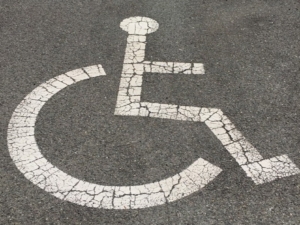
A new report found that companies who hire people with disabilities outperform their peers, and the U.S. Department of Labor found employers who embrace disability in their talent acquisition strategy have higher retention, employee productivity and workplace safety.
Despite this hard evidence and compelling statistics, the workplace landscape is still disappointingly homogenous when it comes to disabilities. Many hiring managers harbor misconceptions and subscribe to inaccurate stereotypes about people with disabilities and what they are capable of with their conditions. Some of our clients say they wanted to return to their former employer once they medically recovered, but their job was no longer there. Others make the mistake of disclosing their condition during the interview process for a new position and never hear from a potential employer again. Still others don’t believe they can ever go back to work because they don’t realize accommodations can be made for them.
10 million former workers and their dependents currently receive Social Security Disability Insurance (SSDI) benefits, a type of income replacement insurance that is paid by the federal government when workers experience severe health conditions. These benefits help individuals and families survive when the salary stops coming in.
In the first several decades of SSDI’s inception as a program, its beneficiaries were overwhelmingly men. Women were not as prominent in the workforce, and therefore were not as likely to be insured for these benefits through their employment (FICA) taxes. In fact, in the 1970s, researchers found that women reported higher rates of disability but were less likely to apply for SSDI. They also found that compared to men with disabilities, women with disabilities were more likely to rely on a spouse’s earnings instead. Now, women are nearing equity with men when it comes to being awarded the benefits they deserve.
Many of us think we’ll never need to take advantage of such a program — we are healthy, fit and successful, right? But the truth is, the odds of experiencing some sort of debilitating medical condition are higher than you think. The Social Security Administration (SSA) estimates one in four twenty-year-olds will be disabled before reaching age 67, and for those who aren’t in their 20s, the chances are even worse. It pays to be prepared.
If you’ve gone through the SSDI process, you know how complex and lengthy it can be — tons of paperwork and an average wait time of 600-800 days. While waiting, dangers are everywhere: you can easily slip into poverty, lose your assets, and deplete your savings while trying to make ends meet and continue paying to treat your newly acquired condition. Due to lack of funds, many people with disabilities are even forced to file for foreclosure on their home.
Whether you have been collecting SSDI for a long time or got awarded benefits recently, it’s crucial to consider getting help to go back to work as quickly as possible. Key to this decision is your long-term financial picture. You’ll simply be better off if you can work and generate additional income. Should the unthinkable happen, research shows the longer that someone with a disability is out of the workforce, the harder it becomes for them to re-enter. The market changes, you lose skills, and the gaps in your resume become more and more prominent.
Unfortunately, the unemployment rate for this population is twice as high (7.9 percent versus 3.5 percent) as it is for those who are able-bodied. Getting hired with a disability is no easy task, even though it’s proven to be good for business.
If you find yourself on the job hunt without a plan for success, you need to contact an Employment Network as soon as possible. Employment Networks help thousands of people with disabilities across the nation find or return to jobs by streamlining the process, offering valuable resources and keeping your SSDI benefits safe while you try to work again.
Former workers on SSDI benefits can access free help through SSA’s free Ticket to Work program, which protects SSDI and Medicare benefits as participants transition to full-time work. If you find that you are unable to go back to work or experience a medical setback, the Ticket to Work program acts as your safety net — you won’t lose the benefits you waited years to receive. Employment Networks help coordinate your benefits as you re-enter the working world, alerting SSA to your change of work status and helping you achieve the accommodations you may need to do your job to the fullest extent, perhaps through a flexible work schedule or a remote work arrangement.
For corporate women, every day can be a struggle, but even a severe disability cannot keep them from experiencing the personal and financial rewards of returning to work. Employment Networks can help them create an Individual Work Plan, start the Ticket to Work program and get back to climbing the career ladder.
Paula Morgan has more than 18 years of public and private experience helping people successfully navigate Social Security Administration (SSA) disability programs. She is a return to work case manager for Allsup Employment Services (AES), a national, SSA-authorized employment network (EN). Morgan works with former workers with disabilities to help them navigate the SSA’s Ticket to Work (TTW) program. She focuses on education and early intervention of social security disability insurance (SSDI) applicants as they move through the insurance program and identifies opportunities for returning to work should their condition improve.
 Author Bio
Author Bio
Paula Morgan has more than 18 years of public and private experience helping people successfully navigate Social Security Administration (SSA) disability programs. She is a return to work case manager for Allsup Employment Services (AES), a national, SSA-authorized employment network (EN). Morgan works with former workers with disabilities to help them navigate the SSA’s Ticket to Work (TTW) program. She focuses on education and early intervention of social security disability insurance (SSDI) applicants as they move through the insurance program and identifies opportunities for returning to work should their condition improve.
Guest contributors views are their own.
